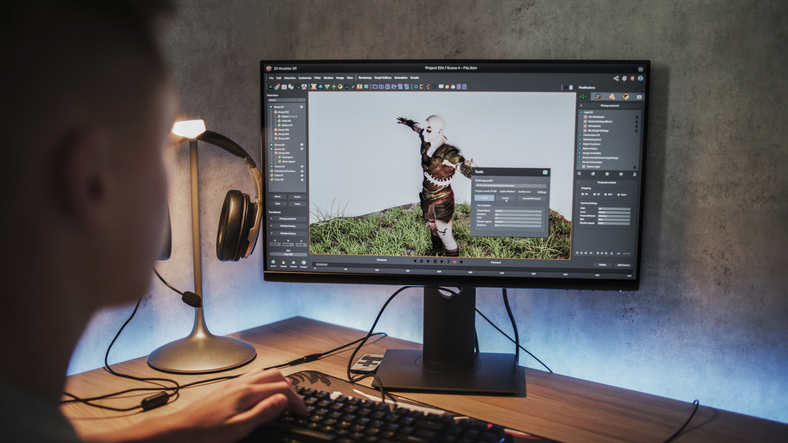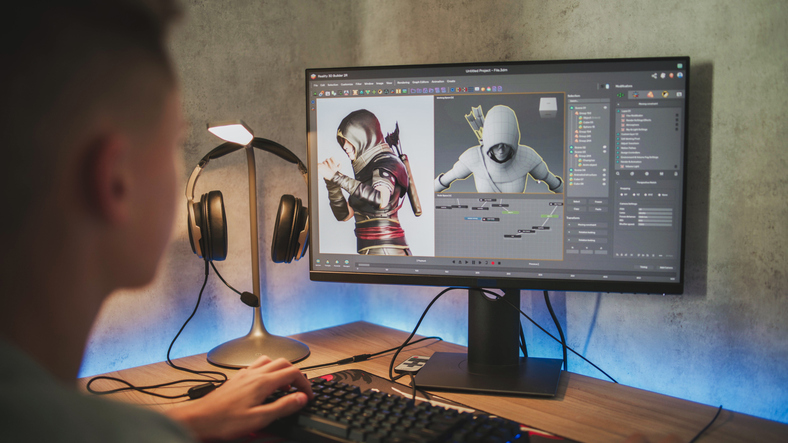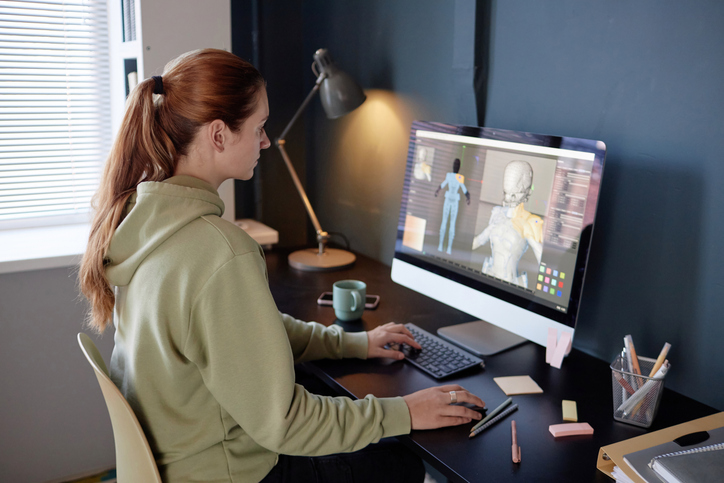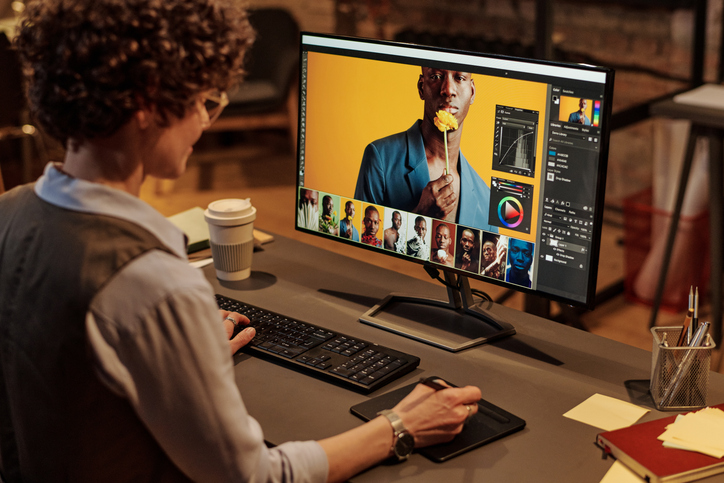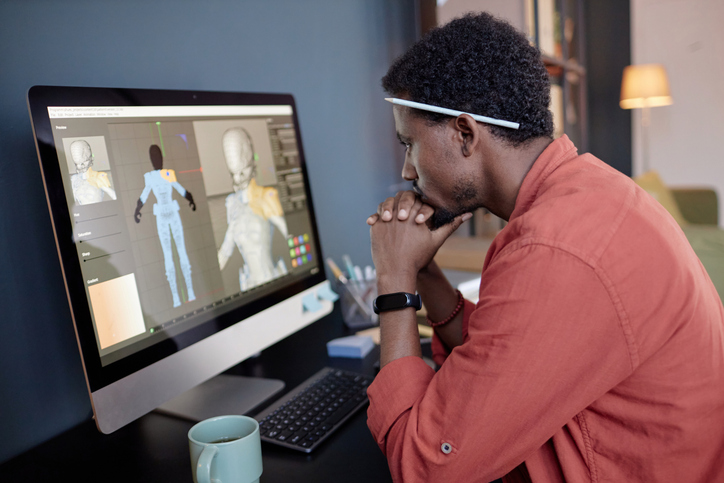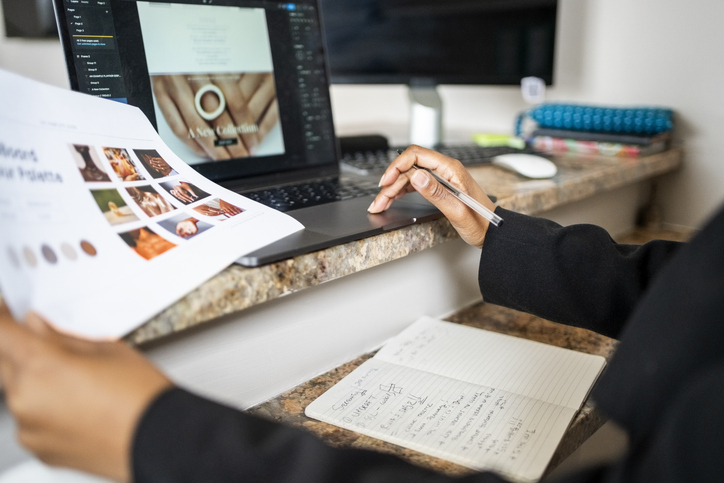In the world of design, your portfolio is your golden ticket. It is your showcase, your story, and your personal gallery of creativity. Whether you’re a student aspiring to break into the field or an established designer looking to elevate your career, having a strong portfolio is essential. But what exactly should you put in it? How do you create a portfolio that grabs attention and demonstrates your skills effectively?
This blog will dive deep into what to put in your graphic design portfolio to help you stand out. We’ll also explore why a portfolio is so important, offer tips to create an impressive one, and introduce VCAD’s Graphic Design Diploma Program, where every graduate walks away with a professional, polished portfolio that sets them apart.
Let’s get started!
What is a Graphic Design Portfolio?
A graphic design portfolio is a curated collection of your best work that highlights your skills, creativity, and design style. It serves as a visual résumé that tells potential clients, employers, or educators what you’re capable of and how you approach design challenges.
Your portfolio should not just be a collection of random projects; it should tell a cohesive story about your abilities and experiences. Whether you’re applying for a job, freelancing, or continuing your education, your portfolio acts as your first impression and should reflect your strengths and aspirations as a designer.
Additionally, your portfolio is not just about the final results; it should also highlight the process behind your designs. Including sketches, mood boards, and project breakdowns will give viewers insight into how you think as a designer.
Why is a Graphic Design Portfolio Important?
In the design industry, showing is always better than telling. Your portfolio serves as a powerful tool that validates your expertise and artistic capabilities. Here’s why having a graphic design portfolio is crucial:
-
Demonstrates Your Skills: Employers and clients don’t just take your word for it—they need to see proof of your capabilities. Your portfolio provides real examples of your expertise in layout, typography, branding, web design, UI/UX, motion graphics, and print media. It displays not only the final outcomes but also your ability to conceptualize, strategize, and execute creative solutions.
-
Sets You Apart from the Competition: Graphic design is a highly competitive field. With so many designers vying for the same roles, having an exceptional portfolio can elevate you above the competition. A polished, well-organized portfolio demonstrates that you’re not just talented but also professional, detail-oriented, and committed to quality work.
-
Attracts Potential Clients: For freelancers, a strong portfolio is one of the best ways to win over new clients. Your portfolio helps potential customers visualize how your work can benefit their business. If they see a style or design approach that resonates with them, they’re more likely to hire you. Including testimonials and case studies strengthens your credibility even further.
-
Builds Your Confidence as a Designer: Having a strong portfolio doesn’t just impress others—it also helps you build confidence in your own work. Seeing a collection of your best projects in one place can be incredibly motivating. It validates your hard work, encourages you to take on new challenges, and serves as a reminder of how far you have come in your journey as a graphic designer.
-
Shows Your Growth and Style: Your portfolio is a visual timeline of your progress as a designer. It highlights how your creativity has evolved, how your skills have strengthened, and how your understanding of design principles has deepened. It is also a great way to display your personal style and artistic voice, allowing potential employers and clients to get a sense of your individuality as a designer.
Now that we understand its importance, let us get into the most important part what to put in your graphic design portfolio!
Bonus Read: Is Graphic Design a Good Career Choice in 2025?
What to Put in Your Graphic Design Portfolio
A well-rounded portfolio includes a variety of elements that demonstrate your range and expertise. Here are the key components every portfolio should have:
1. An Engaging “About Me” Section
Before people dive into your work, they should get to know you! Include:
2. Your Best Work
Quality over quantity is key. Select 8-12 of your strongest pieces that demonstrate your skills and versatility. Ensure your work is:
3. Case Studies of Select Projects
Highlighting finished projects is great, but explaining your process can set you apart. For a few of your best projects, include:
4. Diverse Work Samples
To show your range, include different types of projects:
5. Passion Projects
If you are a student or new designer, create your own projects to highlight creativity. Redesign existing logos, make mock-up advertisements, or build a concept website.
6. Client Work & Testimonials
If you have worked with real clients, include testimonials or brief client feedback to add credibility.
7. Contact Information
Make it easy for people to reach you! Include:
Tips for Creating an Impressive Graphic Design Portfolio
Keep It Organized & Easy to Navigate
Your portfolio should be user-friendly and well-structured. Use categories or sections for different types of work to make it easy for viewers to find what they need. Avoid cluttered layouts, excessive text, or confusing navigation, as they can detract from the overall experience.
Ensure High-Quality Images
Blurry or low-resolution images can make even the best designs look unprofessional. Always use high-resolution images to maintain the clarity and quality of your work. If displaying print projects, include professional photos that accurately depict textures, colors, and layouts.
Show Your Process, Not Just the Final Product
Employers and clients love to see how a designer thinks. Including sketches, wireframes, mood boards, and iterations shows that you understand the problem-solving aspect of design. This transparency can set you apart by demonstrating that you can develop ideas and refine them effectively.
Keep It Updated
Your portfolio should evolve as you grow as a designer. Regularly update it with new projects that reflect your latest skills and trends in the industry. Remove older, weaker work to ensure your portfolio always highlights your best abilities.
Make It Accessible Online
Having a digital portfolio increases your chances of being discovered by potential clients or employers. Platforms like Adobe Portfolio, Wix, and Behance allow you to create a professional online presence where people can easily browse your work. Make sure your portfolio is mobile-friendly and easy to navigate across different devices.
Why Choose VCAD’s Graphic Design Diploma Program?
If you are ready to build an impressive portfolio and kickstart your graphic design career, VCAD’s Graphic Design Diploma Program is the perfect choice. This program is designed to provide hands-on training, expert instruction, and real-world projects that will prepare you for the competitive design industry.
Hands-On Learning with Industry Experts
At VCAD, you will learn from experienced professionals who bring their real-world knowledge and expertise into the classroom. Their guidance ensures that students develop both technical and creative skills required in the industry.
Cutting-Edge Software Training
Mastering industry-standard tools is crucial for a successful graphic design career. VCAD’s curriculum includes training in Adobe Creative Suite, covering essential software such as Photoshop, Illustrator, InDesign, and more.
Diverse Skill Development
The program covers a wide range of design disciplines, including branding, typography, advertising, packaging, web design, and motion graphics. This diverse training ensures that students graduate with versatile skills applicable to multiple industries.
Professional Portfolio Development
A strong portfolio is the key to securing job opportunities. By graduation, every student will have a fully polished portfolio that highlights their skills, style, and versatility—ready to impress future employers or clients.
Career Support & Networking
VCAD offers career services that help graduates connect with job opportunities in branding, advertising, digital media, and more. Networking events and mentorship opportunities also provide valuable industry connections to support your career journey.
Final Thoughts
A well-crafted graphic design portfolio is the key to unlocking opportunities in the industry. Whether you are aiming for a job, freelancing, or continuing your education, what you put in your graphic design portfolio matters.
If you are serious about a career in graphic design, VCAD’s Graphic Design Diploma Program will equip you with the skills, tools, and portfolio needed to stand out. With expert guidance and hands-on projects, you will graduate ready to impress future employers and clients.
Are you ready to transform your passion into a profession? Join VCAD today and start building the portfolio that will shape your future!
